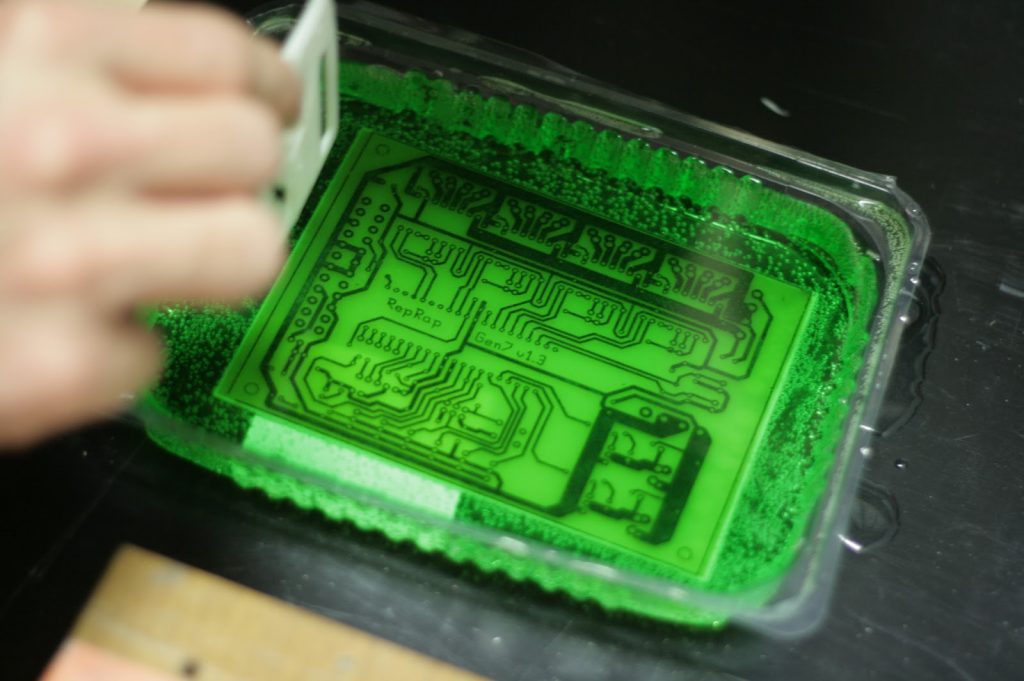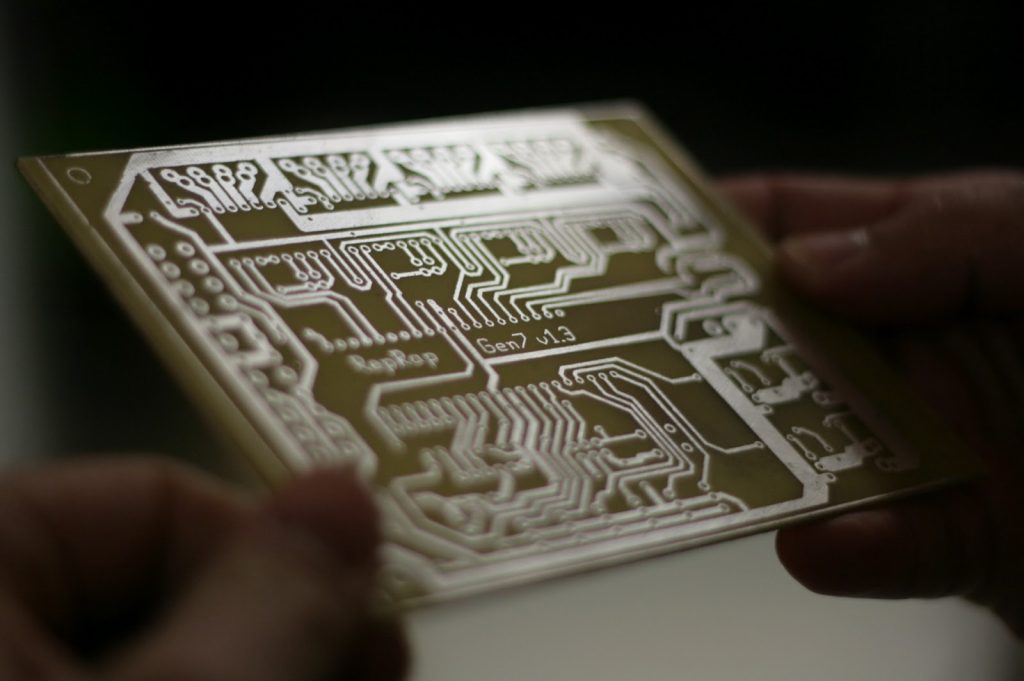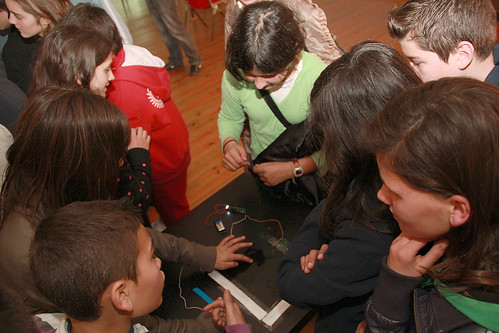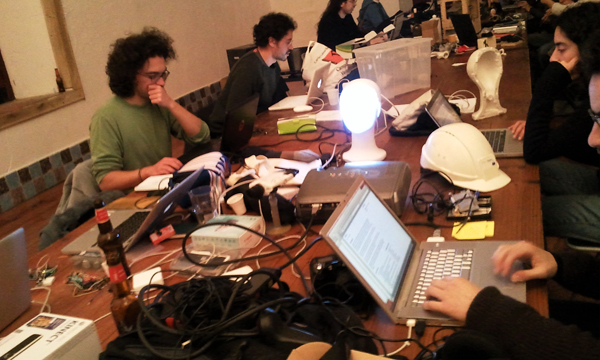The AZ Labs residency at Espaço do Tempo in Montemor-o-Novo is sadly over for now. Folks have been working hard to finish things up for the proto exhibition of projects we had on Saturday.
A few projects were shelved or abandoned for different reasons. Not stable enough, not enough time, no right materials, not enough beer. In the end were left with 9 projects.
AR Cubes — André Sier developed a few experiments with cubes glued with printed augmented reality fiducial markers. Different markers trigger different effects. You can play with them to make different combinations of objects and lines interacting with each other.
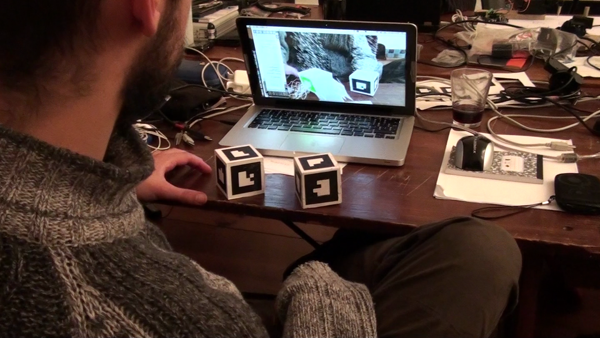
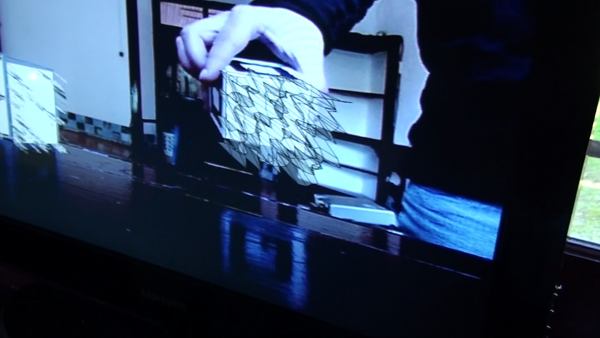
Tracking Head — Tiago Serra, Andrea Inocêncio and Mauricio Martins worked on a manequin head rescued during a dumpster diving session. They equipped a box with IR leds and use a camera with filters to track the movement of the box. With these values they send rotation information to a servo motor equiped in the base of the manequin head. The same values are also sent to a software that selects a corresponding angle photo which is projected in the manequin. This system makes the freaky manequin head rotate in the direction of the object.
Talking Head — Next to the Tracking Head we have a speaker box equipped wih an arduino, an ir receiver and a wave shield. When the box handled by the user aims at the speaker box it triggers random samples from a sample pool, giving the illusion that the head itself is talking. Mauricio, André, Filipe, João and Rita worked on this project.
Tracking Boids — The floor of the Tracking Head space is covered with small light spots flying around. These boids, programmed by André Sier may look like random disco lights on first glance but when someone moves into the camera they flock towards the user.
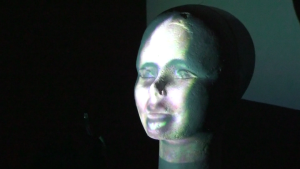

Micro CNC — Tiago Rorke had been working on a Micro CNC project, pieces printed with the Makerbot. Tereza Cardoso gave him a hand making a project out of it by taking photos of the attenders of the residency, downgrading them to vector format and having the micro cnc sketch them. They are drawn on the walls of the residency itself, along with qr code linking to video interviews talking about each persons involvement with the different projects.
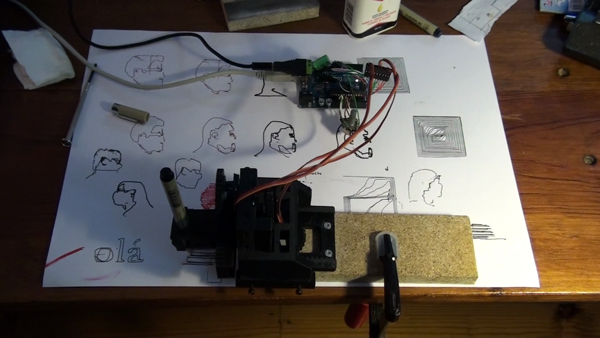
Paint Video Signals — Andrea Inocêncio recorded some short videos of red blue and black paint being applied to different mediums (water, paper, table). Filipe Cruz did a little processing sketch to extract midi values from a grid of pixels in the video and send them to reaktor. Some generative sound tests were recorded and mixed into a video dvd.

Blip Blop Blir Boxes — André Sier and Mauricio Martins worked on a few small boxes packed with an Arduino, IR sensors, LEDs and speakers. Boxes pointing to each other make the LEDs change their color. A third box pointed to the previous boxes makes them give out some blips and blops sounds.
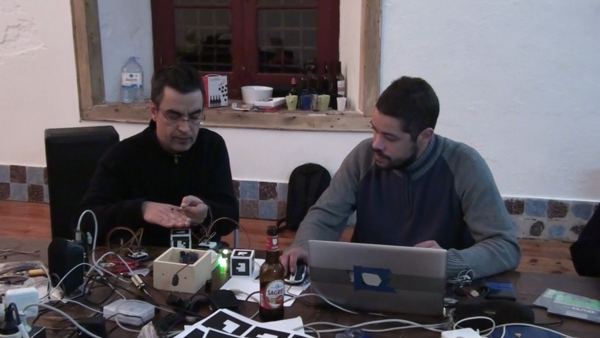

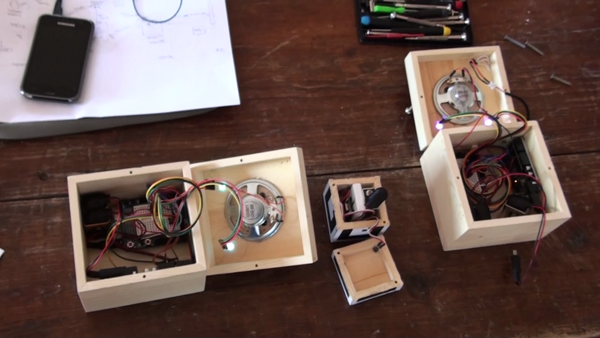
“O mundo é em cada instante o que ele não pode não ser.” — A project conceived by Patricia Proença consisting of a hand drawn animation of a tree growing being projected into a wall. The animation is triggered when a watering can equiped with a cellphone is tilted into an alien plant object. Tiago Serra gave her a hand with the technical implementation.

Trailchi — Guilherme Cartaxo and Sónia Malaquias been working for while on their project involving long exposions to tai chi sessions performed in the dark with a sword and suit equipped with 12 LEDs. The captured animations makes some beautiful light trails art. Also helps analyse the motion of the session.

